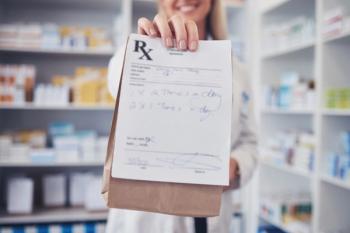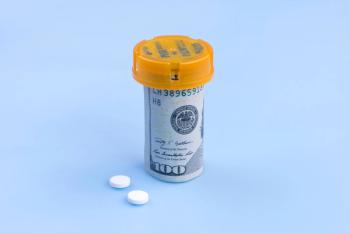
The Dangers of Mailing It In
Mail Order Poises to Become the Largest-Grossing Portion of the Business
As I mentioned in an editorial in a recent issue of Pharmacy Times®, specialty pharmacy will make up roughly half of the nation’s drug bill this year, despite comprising just 2% of prescription fills. Retail pharmacy (nongovernment, nonclinic, etc.) makes up roughly 70% of dispensing, of which mail order accounts for 35%. That leaves community pharmacies with about 45% of the dispensing pie.1 Between mail-order entrants such as PillPack and the growth of specialty pharmacy and its bent toward mail order, it will not be long before dispensing via mail becomes the largest-grossing type of pharmacy “practice” by revenue.
Face-to-Face Pharmacy Receives a One-Two Punch
This trend is hollowing out community-based pharmacy care. Lower reimbursement is the left jab, and mandatory mail order is the right hook. Especially in rural communities, which lack large specialty clinics and hospitals able to support pharmacists’ salaries, face-to-face contact with local pharmacists locally happens less and less. With the Medicaid battle ongoing throughout the country, in Ohio, the Columbus Dispatch coined the term “pharmacy desert.”2 In that state, many patients in hundreds of small towns in who are losing pharmacies will end up on mail order, which is a significant loss to their communities.
Community-Based Pharmacies Offer More Than Meets the Eye
A tightknit community’s identity rests partly in is local pharmacy, from the ethnically vibrant neighborhoods of Brooklyn, New York, to the Americana of Maquoketa, Iowa. They aren’t just tax-paying small businesses — they’re part of the fabric and social networks of their locales. And in rural areas, they are one of the last lines of access to care.
A Trip to Iverson Corner Drug Proves Eye-Opening
Over the Independence Day holiday, I had the opportunity to visit a local pharmacy while vacationing in northern Minnesota, where I spent my childhood summers. Paul Iverson has operated Iverson Corner drug in Bemidji, Minnesota, for nearly 30 years. He bought the business from someone who had owned for the same duration, who bought from someone ... and so on, all the way back to the 1800s.
Iverson recently sold his pharmacy to Ryan Okerlund, who moved over from the local health system to take a run at preserving a part of his community. It is the only independent pharmacy for 40 miles in three directions and 20 miles in the other. It occurred to me that we need to start referring to pharmacies in these areas as “critical access pharmacies,” similar to the “critical access hospital” designation by the Centers for Medicare & Medicaid Services, which provides extra support as well as differential reimbursement models and grants. Bemidji may be bigger than the nearby community of Bagley, Minnesota, 20 miles to the west, but in this very sparse part of the country, the local pharmacy is vital. If that community lost its pharmacy, my parents would have to drive at least 45 minutes to have a face-to-face conversation with a pharmacist.
I Couldn’t Have Said It Better Myself
Iverson showed me a letter that he sent a couple of years ago, when the church he attended decided it would switch to a mail order prescription plan after some broker convinced a naive accountant that this move would save money and work better for the church employees’ health care plan. Iverson wrote this parody to help the congregation understand that mail order is not an equivalent substitute for a community-based pharmacy.
MAIL-ORDER CHURCH
I have been contacted by a pastor about joining a new television congregation. They have many wonderful features. It won’t be necessary to leave my home for church on those cold winter mornings. I can just turn on the TV and church will be there. Not only that, but if that time is not convenient for me, they will mail a tape of a service directly to my home. No more dealing with trying to find a parking spot Sunday morning or with long lines at communion — church will be delivered right to my doorstep.
I asked about the quality of the product they are delivering. They assured me that it’s the same God I get at my local (Evangelical Lutheran Church in America, or ECLA) congregation, so what should it matter who delivers the message? Plus, they can do it for much less money than the local ELCA church can. I asked what happens if I need a local service, and they informed me they have contracted with a local church for those onetime religious needs. Not only that, but if I need a funeral or a wedding, I only pay for the cost of the food plus $2. I asked how the local church could afford to do that and was told that the building is there anyway, and the pastor is already being paid a salary, so the fee that they receive is just extra revenue. And by the way, who really needs churches anyways? If they can’t survive in the era of the mail-order church, they’ll probably make a good space for the town’s affordable housing needs, what with all of the jobs leaving town.
A Small-Town Pharmacy Owner Makes a Big Impression
Last year when Pharmacy Times® participated in the Register’s Annual Great Bicycle Race Across Iowa, I had the chance to meet with Bob Sussman, who owns Manning Pharmacy in Iowa, another operation that started in the 1800s. For this town of approximately 1,500, Sussman staffed not only his pharmacy but also the local critical access hospital in town to make sure it had a pharmacist too. I’ve never had such an engaging interview as I did with Sussman. I’ll never forget the moment he said, “I want to leave the community better off than when I found it. If [I can’t make the pharmacy] financially sustainable, then I’ve failed [my community].”
Handoffs Are About More Than Retirement
But then again, they are about retirement. Who is on the receiving end? Will you hand off to somebody who will keep the pharmacy open? Will that person be properly prepared to keep it open and hand it off to somebody else? Nearly every pharmacy owner deserves a rewarding exit and retirement, but do you owe it to your patients to keep that pharmacy going?
Plan Ahead and Start Evolving Now
Congrats to Iverson and kudos to Sussman. They are thinking about their communities and strategizing about the single most meaningful part of their lives outside of their families. Iverson Drug started planning years ago, remodeling his pharmacy to include a counseling area and then a closed-door room for patient visits. He built out his services and made an appeal to a local pharmacist who, without Iverson’s long-range plan to start building those services, might not have bought his pharmacy.
About four years ago, when I was in North Carolina, I received a call from a pharmacy owner of five locations — someone for whom I have a lot of respect. “I heard you were building a network of pharmacies called [Community Pharmacy Enhanced Services Network] that is weaving in enhanced services,” he said. “I’m not interested in that stuff myself; I’m an old dog. But all of my young partners (are). They realize that they have a 30-year business horizon, and they don’t want to buy from me unless we start evolving. So this effort is becoming part of my plan.” No doubt that pharmacy owner is on his sailboat as I write this column.
Take notice: Not having a plan to build out services for the future is the knockout punch. It’s easy to turn off pharmacies and mail it in. It’s hard to turn off services, so get moving, y’all.
Callout: “Not having a plan is the knockout punch.”
References
- IQVIA website.
iqvia.com/-/media/iqvia/pdfs/institute-reports/medicine-use-and-spending-in-the-us---a-review-of-2018-outlook-to-2023.pdf . Accessed June 24, 2019. - Caruso D. Pharmacy ‘deserts’ appear in Ohio as stores close amid drug pricing debate. Columbus Dispatch. July 7, 2019.
dispatch.com/news/20190707/pharmacy-deserts-appear-in-ohio-as-stores-close-amid-drug-pricing-debate . Accessed July 17, 2019.
Troy Trygstad, Pharm.D., Ph.D., MBA, is the executive director of CPESN USA, a clinically integrated network of community-based pharmacies in nearly all 50 states. He received his Pharm.D. and MBA degrees from Drake University and a Ph.D. in pharmaceutical outcomes and policy from the University of North Carolina. He also serves on the board of directors for the American Pharmacists Association Foundation and the Pharmacy Quality Alliance and proudly practices in a community pharmacy on nights and weekends.
Newsletter
Pharmacy practice is always changing. Stay ahead of the curve with the Drug Topics newsletter and get the latest drug information, industry trends, and patient care tips.




































































































































